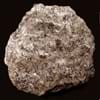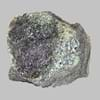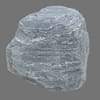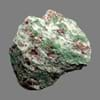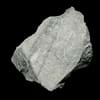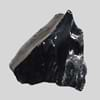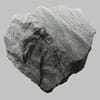Definition
Schist is a medium grade metamorphic rock with medium to large, flat, sheet like grains in a preferred orientation
Aplite is a fine-grained granite composed mainly of feldspar and quartz
Discoverer
Unknown
Unknown
Etymology
From French schiste, Greek skhistos i.e. split
From German Aplit, from Greek haploos simple + -ite
Class
Metamorphic Rocks
Igneous Rocks
Sub-Class
Durable Rock, Medium Hardness Rock
Durable Rock, Hard Rock
Group
Not Applicable
Plutonic
Other Categories
Coarse Grained Rock, Fine Grained Rock, Medium Grained Rock, Opaque Rock
Fine Grained Rock, Opaque Rock
Texture
Foliated, Platy
Granular, Graphic
Color
Black, Blue, Brown, Dark Brown, Green, Grey, Silver
Black, Grey, Orange, Pink, White
Durability
Durable
Durable
Appearance
Layered and Shiny
Veined or Pebbled
Interior Uses
Decorative Aggregates, Floor Tiles, Interior Decoration
Bathrooms, Countertops, Decorative Aggregates, Entryways, Floor Tiles, Homes, Hotels, Kitchens, Stair Treads
Exterior Uses
Garden Decoration, Paving Stone
As Building Stone, As Facing Stone, Bridges, Paving Stone, Near Swimming Pools, Office Buildings, Resorts
Other Architectural Uses
Not Yet Used
Curbing
Construction Industry
As Dimension Stone, Building houses or walls, Cement Manufacture, for Road Aggregate, Roadstone
As Dimension Stone
Medical Industry
Not Yet Used
Not Yet Used
Antiquity Uses
Artifacts
Artifacts, Monuments, Sculpture, Small Figurines
Commercial Uses
Used in aquariums, Writing Slates
Curling, Gemstone, Laboratory bench tops, Small Sculptures, Tombstones
Types
Mica Schists, Calc-Silicate Schists, Graphite Schists, Blueschists, Whiteschists, Greenschists, Hornblende Schist, Talc Schist, Chlorite Schist, Garnet Schist, Glaucophane schist.
Not Available
Features
Easily splits into thin plates, Smooth to touch
Available in lots of colors, Available in Lots of Colors and Patterns, Is one of the oldest rock
Archaeological Significance
Monuments
Not Yet Used
Used
Famous Monuments
Not Applicable
Data Not Available
Sculpture
Not Yet Used
Used
Famous Sculptures
Not Applicable
Data Not Available
Pictographs
Used
Not Used
Petroglyphs
Used
Not Used
Figurines
Not Yet Used
Used
Formation
Schist formed by dynamic metamorphism at high temperatures and pressures that aligns the grains of mica, hornblende and other elongated minerals into thin layers.
Aplites belong to intrusive igneous rocks which are mostly quart and alkali feldspar and are formed from residual eutectic granitic liquids and represent the final crystallization products of magma.
Mineral Content
Alusite, Amphibole, Biotite, Chlorite, Epidote, Feldspar, Garnet, Graphite, Hornblade, Kyanite, Micas, Muscovite or Illite, Porphyroblasts, Quartz, Sillimanite, Staurolite, Talc
Amphibole, Biotite, Feldspar, Hornblade, Micas, Muscovite or Illite, Plagioclase, Pyroxene, Quartz
Compound Content
CaO, Carbon Dioxide, MgO
Aluminium Oxide, CaO, Iron(III) Oxide, FeO, Potassium Oxide, MgO, MnO, Sodium Oxide, Phosphorus Pentoxide, Silicon Dioxide, Titanium Dioxide
Types of Metamorphism
Not Applicable
Burial Metamorphism, Cataclastic Metamorphism, Hydrothermal Metamorphism, Regional Metamorphism
Types of Weathering
Biological Weathering, Chemical Weathering, Mechanical Weathering
Chemical Weathering, Mechanical Weathering
Types of Erosion
Chemical Erosion, Coastal Erosion, Glacier Erosion
Chemical Erosion, Coastal Erosion, Wind Erosion
Grain Size
Medium to Fine Coarse Grained
Very fine-grained
Fracture
Conchoidal
Not Available
Porosity
Highly Porous
Less Porous
Luster
Shiny
Dull to Pearly to Subvitreous
Compressive Strength
Not Available
Cleavage
Slaty
Not Available
Toughness
1.5
Not Available
Specific Gravity
2.5-2.9
2.6
Transparency
Opaque
Opaque
Density
2.8-2.9 g/cm3
2.6 g/cm3
Specific Heat Capacity
Not Available
Resistance
Impact Resistant, Pressure Resistant, Water Resistant
Heat Resistant, Wear Resistant
Deposits in Eastern Continents
Asia
Afghanistan, Bangladesh, Bhutan, China, India, Japan, Kazakhstan, Malaysia, Pakistan, Russia, Thailand, Turkey, Vietnam
China, India, Iran, Saudi Arabia, Sri Lanka, Taiwan, Thailand, Turkey, Vietnam
Africa
Egypt, Ethiopia, Morocco, Nigeria, South Africa
Angola, Egypt, Madagascar, Namibia, Nigeria, South Africa
Europe
Austria, England, France, Georgia, Germany, Italy, Liechtenstein, Monaco, Norway, Slovenia, Spain, Sweden, Switzerland
Austria, Belgium, Finland, France, Germany, Italy, Norway, Sardinia, Spain, Switzerland, The Czech Republic, Venezuela
Others
Not Yet Found
Not Yet Found
Deposits in Western Continents
North America
Canada, Costa Rica, Cuba, Mexico, Panama, USA
Canada, USA
South America
Brazil, Colombia, Guyana
Not Yet Found
Deposits in Oceania Continent
Australia
New South Wales, New Zealand, Queensland
Not Yet Found


